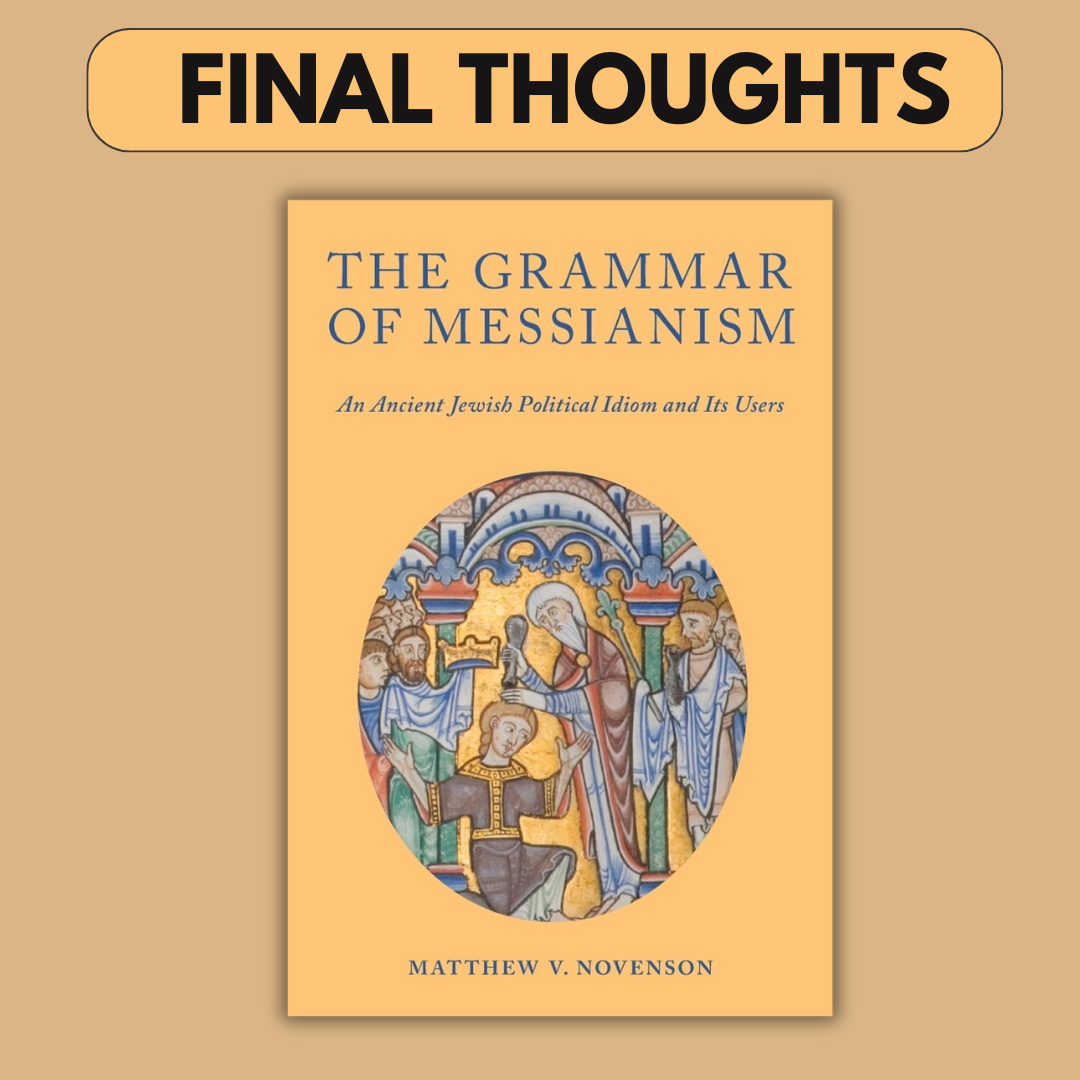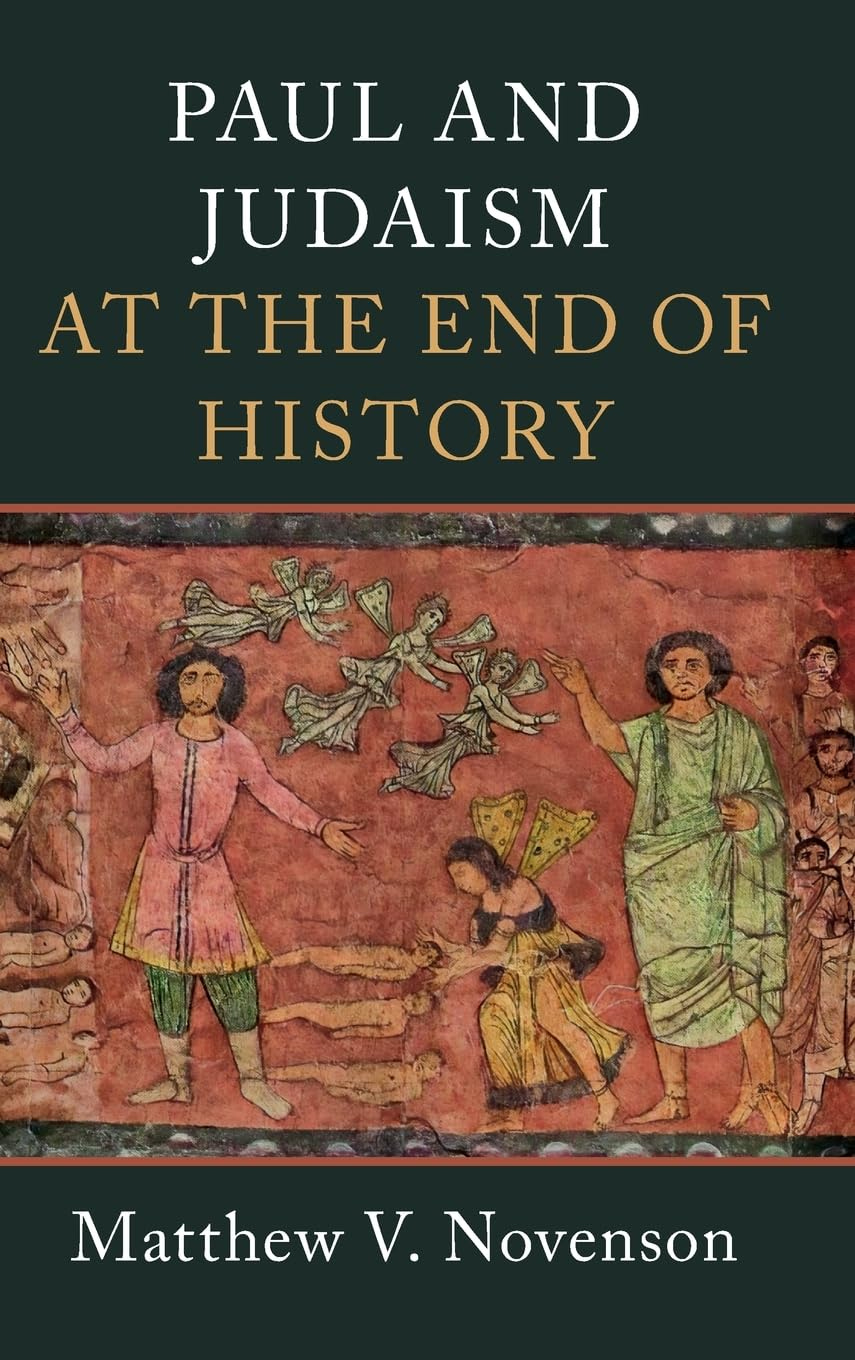Final Thoughts
This final post in this Substack series will focus on my concerns with Novenson’s book. Now, I want to be clear that this is a book well worth reading and I learned a lot, and I have said many positive things in Parts 1 & 2 of this series. If you feel like I am being too harsh here, please go back and read the earlier posts!
[Need to get caught up? Read PART 1; PART 2]
This book is not really about messianism
What Novenson does in this book, he does well. But it felt as if this was a warning guide for those writing about ancient Jewish messianism, and in the end it seemed like Novenson offered little on the subject of ancient messianism itself. One critique I read (Horbury?) is that Novenson fails to offer his own definition of “messianism” which then obfuscates which texts he might include or exclude.
The fact that the title is The Grammar of Messianism is a bit misleading in the end. Novenson doesn’t say much about “messianism” and he doesn’t really like how scholars use this category. (Personally, I didn’t like the language of “grammar” either; it seemed like a clever formulation that lacked precision).
What the big idea?
This brings me to my second point. While reading the book, I was (1) unclear about the main thesis idea of the book and (2) how the individual chapters are connected to one another. My take is that Novenson really shines as an “essayist.” He is compelling on the micro-argument level, because that is the way he likes to engage and communicate. In a traditional “collection of essays” that is fine, but a monograph like this leads readers (like me at least) to expect a very direct and transparent contribution.
I had to really work for it, and I got there in the end: the “grammar” of messianic texts involve re-interpretation of ancient Scripture and tries to use the past to understand the present. But if I were his editor, I would impress upon him to value of making a singular thesis idea clear early, and consistent throughout the whole.
Maybe I am alone in this, but I would at least imagine it would have widened the audience and impact of the book.
Not much New Testament?
Given that Novenson is a New Testament scholar who teaches New Testament and is primarily interested in ancient messiah texts to better understand the New Testament—I was very surprised how little New Testament there was in this book. Now, categorically, this book is more at home in the library shelf on “ancient Judaism,” but I would think a chapter devoted to the NT would have been very helpful and satisfying. In fact, Novenson devotes a whole chapter to post-NT (Patristic) Christian reflection on christology and messianic discourse, so all the more reason to give some time to the Gospels (the most focused Christian texts focusing on Jesus as the Messiah) and/or Paul (the earliest extant NT writer). (NB: NT Wright has a lengthy review of Novenson which raises some of these same points. Read it HERE)
What Novenson assumes
One of Novenson’s tendencies in his writings (I just finished reading his Paul and Judaism at the End of History) is to give definitive judgments about scholarship. This is not my tendency (I use a lighter touch), although I am not flat-out against it. Still, if whenever it feels too heavy-handed or doesn’t feel very convincing, it just doesn’t land for me. This especially relates to his chapter about chapter 4 (“Messiahs Present and Absent”). I might be oversimplifying his chapter here, but he basically says that scholars make too big a deal of why explicit messiah language is missing from Josephus and Philo, and Novenson responds to this absence by simply saying: authors talk about things in different ways so absence doesn’t actually mean anything. My response is: Philo and Josephus wrote a heck of a whole lot—Philo’s library is huge. Philo offers about 30x the amount of literature compared to the apostle Paul. What are the chances he does not mention the messianic idea explicitly—even once? I don’t think Novenson sufficiently explains why explicit messianic discourse appears in some writings and not others. Yes, it appears to be genre-related, geographic, or discourse or rhetoric-related, but can we be more specific? What exactly are the rules of this language game?
I feel like Novenson tried to pull a “these are not the droids you are looking for” trick. But in fact I am still looking for these droids.
Novenson writes: “Significant absences are in the eye of the beholder” (159). My response is: if enough of us who are competent '“behold,” does it not raise a flag? Is it not worth taking more seriously as an oddity?
Final words
I had a group doctoral students read this book and we had a seminar discussion. We all concluded the same things independently as we read: this is very helpful for understanding and critiquing the scholarly discussion of ancient Jewish and Christian messianism, but it wasn’t very helpful in defining messianism, understanding how it developed in history, how it relates to Jesus, and how various forms of early Jewish and Christian messianism compare to one another.
Sometime soon I will be doing another review series of Novenson’s most recent book, Paul and Judaism at the End of History (paid subscribers only): so stay tuned!
Please subscribe to make sure you get all the future posts in the series direct to your email.
If you think other folks would be interested in this series, please share.




As one of Novenson’s former doctoral students, I think it’s important to recognize that Novenson, in this book, is interested in *anointing language* rather than “messianism” if by that we mean a “messianic idea.” This is *the* central idea in this book, and is what unites the various chapters.
Thanks for highlighting what is an important book in this sub field. More people should pay attention to this book.
Very informative and balanced review - thanks for sharing !